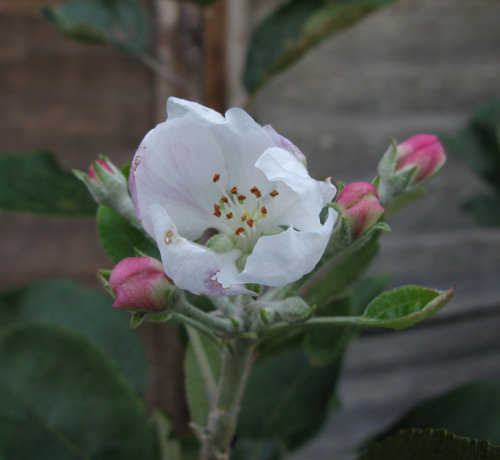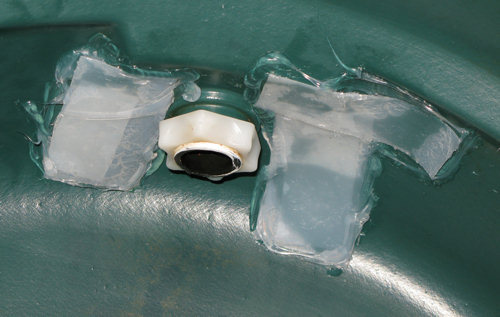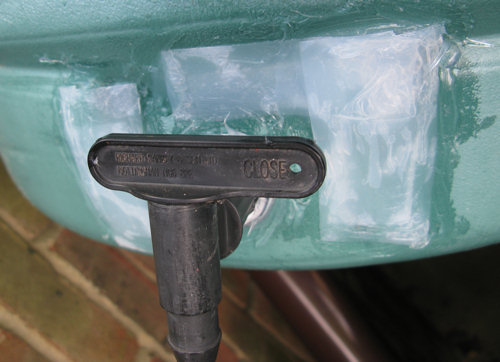Tackling the pond disaster
The exceptionally fine and dry weather has been continuing, and I suddenly decided it was time to stop looking despairingly at my raised pond and do something about it. I removed the tarpaulin and all its supports, and bailed out the few inches of water at the bottom. Then I got a stiff brush and some water, and scrubbed away at the failed pond paint and the algae, and I sanded the bits I couldn’t reach with the brush, and I kept going until I decided that all the paint that wanted to come off probably had come off. Then I gave the inside of the pond a wash with a damp cloth (the washing water came away dark grey, so the colour was still coming off) and let it dry.
I had to decide what to do about the cracked render at the bottom of the pond. The pond builder seemed to think that removing all the render at the bottom was a bad idea, but I don’t know why. Perhaps he thought I might puncture the liner with my chisel. I decided to pick off all the bits that had come loose, and paint over the hairline cracks.
I wanted to use V8 Pondseal with a black additive to make the inside of the pond uniformly black, but I couldn’t find anywhere, even on the Internet, that was selling the black additive, so I think it’s been discontinued. There are black paints available that are probably suitable for recoating concrete that has already been painted, or partly painted, but I decided that I wanted to get the pond up and running now instead of waiting until I could get hold of some black paint. I knew that the pond would have dried out quite well in the warm and dry weather, and now was a good time to block any more moisture from getting into the concrete blocks that have been used to build up the shelf inside the pond. Later on, when I have done the rest of the garden, I can empty and clean the pond and then apply more paint. There is bound to be something that will go on top of Pondseal (as long as I sand it down well).
So today I gave the pond three coats of paint. The strange thing about the Pondseal is that the manufacturer’s opinion of how much paint I need wildly differs from my experience. I estimated that the area I painted last week to seal in the render in the shallow pond was probably close to a square metre, and I did three coats. As 1 litre is supposed to cover 3 -5 square metres, this area ought to require somewhere between 0.6 and 1 litre. In fact I didn’t even use half the 500ml can that I had. The surface area of the raised pond is just over 6 square metres. That should have required at least 3.6 litres, and perhaps as much as 6 litres. I bought 1.5 litres, relying on my previous experience rather than what was written on the can, and used 1 full litre plus some more of the 500ml can left over from painting the shallow pond. I therefore have an unused can, which I can either return to the garden centre or keep for further work on the shallow pond in spring, once I find out where it needs attention. Or maybe I can use it to coat concrete blocks which I will put in the pond to stand plants on.
So maybe I should feel a little uneasy about the huge discrepancy between the amount of paint I have used and the amount that I “should” have used. Perhaps my render was not porous enough. But on the plus side, the black colour didn’t come off into the paint when I painted over it, so I am daring to hope that I may have sealed in the pigment. And the pond looks black and shiny, so it seems that some of the first lot of paint must have been absorbed before it got washed off.





